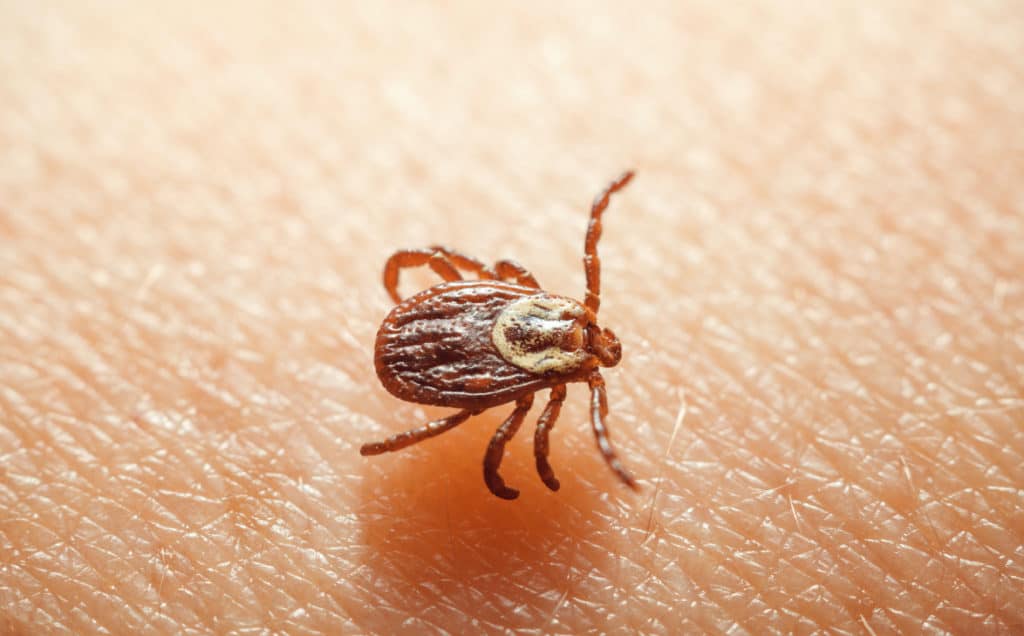Awful Arachnids
Awful Arachnids
What are Arachnids?
While spiders and ticks are often considered insects, this is not actually the case. Both terms insect and arachnid actually refer to different categories within taxonomy. Taxonomy is the scientific identification and classification of organisms through the use of hierarchical categories. All known creatures both alive and extinct have undergone taxonomic classification, from being members of a broad category, all the way down to their specific species. There are 8 taxonomic categories starting with the largest umbrella categories and becoming more specified with each following level. The categories include: Domain, Kingdom, Phylum, Class, Order, Family, Genus, and Species.
Both Insecta and Arachnida are different classes under the phylum Anthropoda. Within their class, arachnids are known for having eight legs, simple eyes (instead of compound eyes), lacking antennas and wings, and having segmented bodies broken down into two parts (unlike the three in insects). There are over 100,000 different species of arachnids. Here are some of the most commonly encountered arachnid pests:

Spiders
Probably the most infamous arachnids in existence, spiders can be found naturally on every continent on Earth save for Antarctica. There are over 40,000 different types of spiders in existence, making them the largest group within the arachnid class. These eight-legged, creepy crawlies are predatory creatures that contain a special set of organs that allow them to excrete a form of silk from their bodies. These arachnids also possess the ability to bite and many of them possess venom that they can inject into their victims with their fangs. Depending on the particular species of spider, some can be incredibly poisonous to humans causing severe medical problems and even death.
Spiders are actually one of the most common pests we get calls about not only due to their proclivity to inhabit areas all over the United States, but also because the discovery of a single one of these arachnids can cause panic in the average person. In fact, arachnophobia is rated as one of the top 10 phobias in the world, making them probably the most disturbing pest we treat for.

Ticks
Ticks are parasitic arachnids that feast on blood to survive. Once a tick has found a host, they split open the skin of their victim and insert their heads with a barbed, straw-like appendage sinking into the flesh. This makes them difficult to remove and, while it sounds painful, the saliva of ticks contains a local anesthetic that numbs the area, making the host unaware of the attacking parasite. This saliva also contains an anticoagulant so that the blood does not clot and continues to flow, along with suppressants for the immune system so that the body cannot respond by creating a large itchy bump or any other sort of reaction that would clue a host into their presence.
Unfortunately, these parasites are commonly infested with dangerous diseases such as Lyme disease and Rocky Mountain Spotted Fever. The effects of these tick-transmitted diseases range from mild symptoms such as fever/chills, aches/pains, and rash, to severe medical emergencies that can even cause lasting complications including, but not limited to, neurological damage and hearing loss.
The most common ticks found in Virginia and surround areas are the Deer Tick, Lone Star Tick, and the American Dog Tick.

Mites
Mites are very closely related to ticks and even have very similar body shapes. They are very minuscule in size ad, while they start out their lives with 6 legs, the adults have the unmistakable 8-leg trademark of arachnids. Although most species of mites are garden pests that feed on agricultural crops, there are a fair number of them that are also parasitic to humans including: chiggers and scabies.

Scorpions
While luckily these arachnids are not naturally found on the East Coast, they are unfortunately a rather common pest for people who live in desert climates such as Arizona, Nevada, and New Mexico. There are roughly 1,200 different species of scorpions throughout the world, 70 of which are found in the United States. Sometimes these creatures are mistaken for having 5 pairs of legs on each side of their body. However, their two additional limbs that are mistaken for legs are actually a set of pinchers that the arachnids use like arms.
Similar to many species of spiders, scorpions can contain highly potent venom, which is injected into their victims via a stinger at the end of their long, segmented tails.

Citations
The Difference Between an Insect and an Arachnid (2020) Allan’s Pet Center. Available at: https://allanspetcenter.com/the-difference-between-an-insect-and-an-arachnid/ (Accessed: October 2020).
Potter, M. (1996) Parasitic Mites of Humans, Entomology at the University of Kentucky . University of Kentucky College of Agriculture . Available at: https://entomology.ca.uky.edu/ef637 (Accessed: January 14, 2021).
Scorpions: Facts About Scorpion Bites, Scorpion Control (no date) Pest World. National Pest Management Association . Available at: https://www.pestworld.org/pest-guide/occasional-invaders/scorpions/ (Accessed: January 14, 2021).
Szalay, J. (2014) Types of Spiders & Spider Facts, LiveScience. Future US. Available at: https://www.livescience.com/22122-types-of-spiders.html (Accessed: January 14, 2021).
Taxonomy (2020) Basic Biology. Available at: https://basicbiology.net/biology-101/taxonomy (Accessed: October 2020).
University of Cincinnati (2017) Ticks are Even Tougher and Nastier Than You Thought, ScienceDaily. U of C. Available at: https://www.sciencedaily.com/realeases/2017/09/170925133016.htm (Accessed: June 2020).

